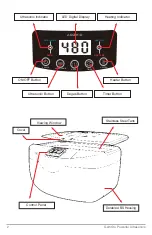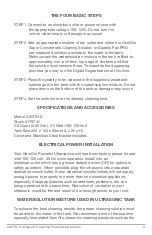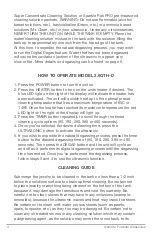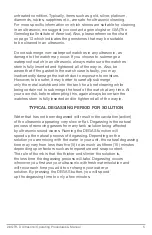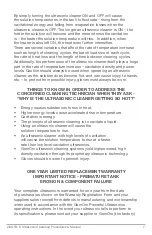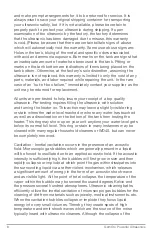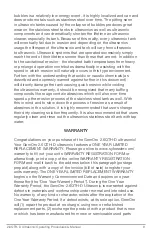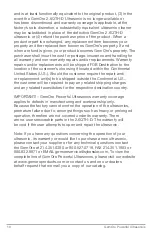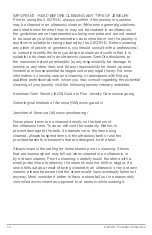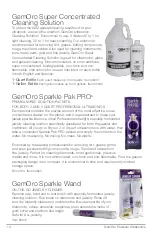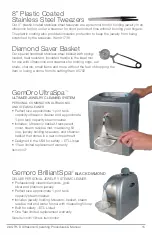
GemOro Powerful Ultrasonics
6
HELPFUL SUGGESTIONS AND PRECAUTIONS
- PLEASE FOLLOW CLOSELY TO AVOID
LOSS OF WARRANTY COVERAGE!
• Change your solution regularly.
• Clean tank regularly.
• Cover your tank to avoid evaporation and lower noise levels.
• Use one of the superior GemOro ultrasonic cleaning
solutions mixed with water for optimal cleaning.
• Operate with the proper level of water/solution mixture in the tank.
• Allow adequate time for the degassing process.
• Never put your fingers into an active, running ultrasonic tank,
as repeated exposure to ultrasonic sound waves may be
harmful, as well as a heated ultrasonic may burn you!
• When emptying and cleaning tank, always
first unplug from the electrical outlet.
• Be certain not to allow jewelry or other items
to rest on the bottom of the tank.
• Be certain not to allow the water/solution in the tank
to drop below two inches from the bottom.
• Be certain not to place flammable, acidic or ammoniated
liquids in the tank, as they may ignite and/or cause
damage to you or others. Further, it may cause damage
to your ultrasonic which will void the warranty.
• Do not install plug into an ungrounded electrical outlet.
• Never operate the ultrasonic without water/solution in the tank.
• For any problems or questions, please consult your supplier.
WHY DOES THE ULTRASONIC GET SO HOT?
Occasionally users of ultrasonic cleaners become concerned due
to the fact that the temperature of their ultrasonic cleaning solution
within the tank becomes too hot. This is typically only experienced
by high volume trade shops, jewelry repair shops and jewelry
manufacturers who utilize the heated ultrasonic throughout the day.
The principle of ultrasonic cleaning is to cavitate a liquid medium
(typically water & ultrasonic cleaning solution/soap – solution) and
is done so by the tremendous shock waves caused by millions of
microscopic vacuum cavities imploding within the solution inside
of the tank. These vacuum cavities build to tremendous pressures
and temperatures (above 10,000 degrees Fahrenheit) and are
instantaneously released into the solution upon implosion – the
release of this energy causes the solution temperature to elevate.


